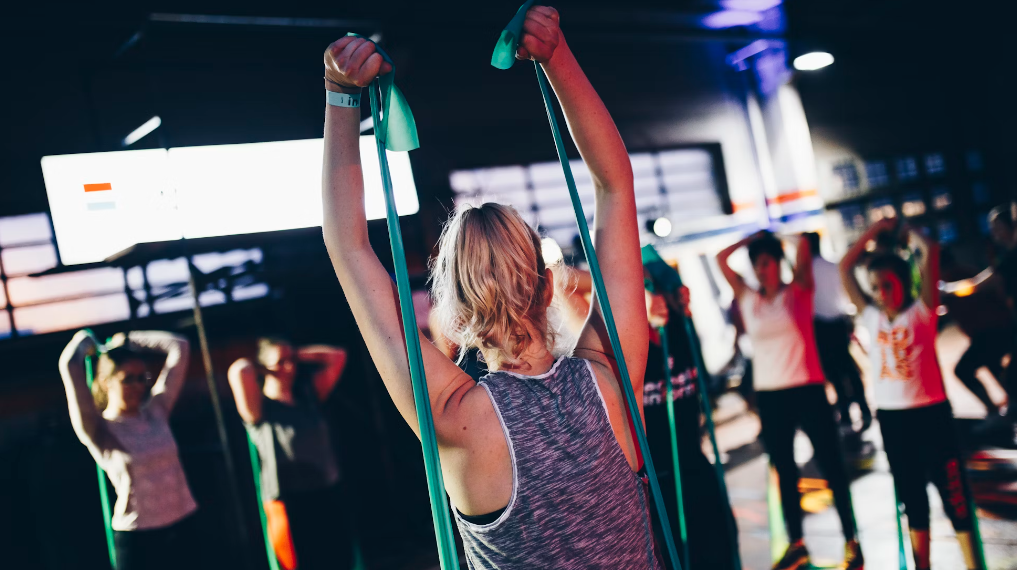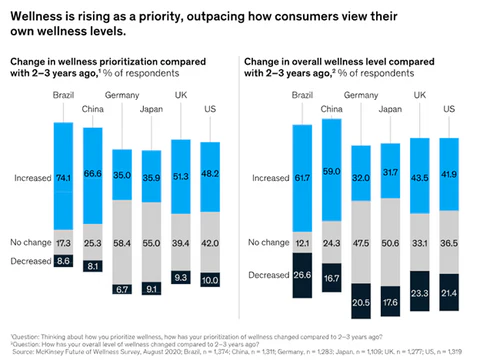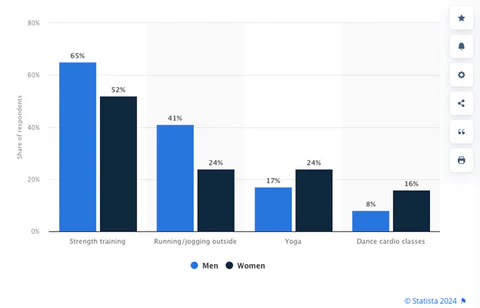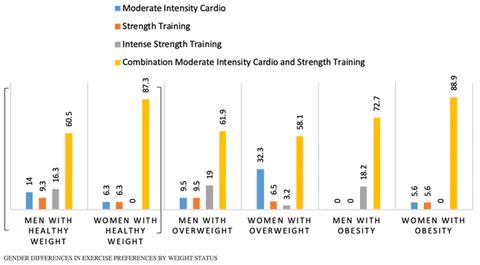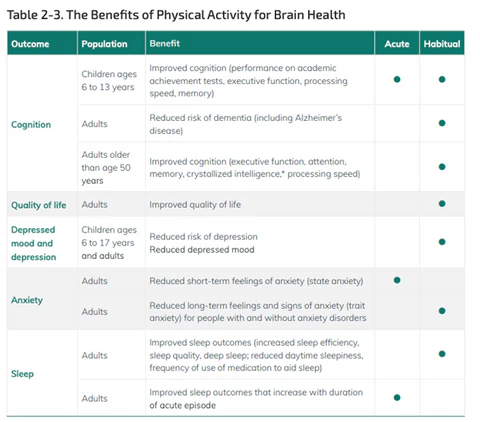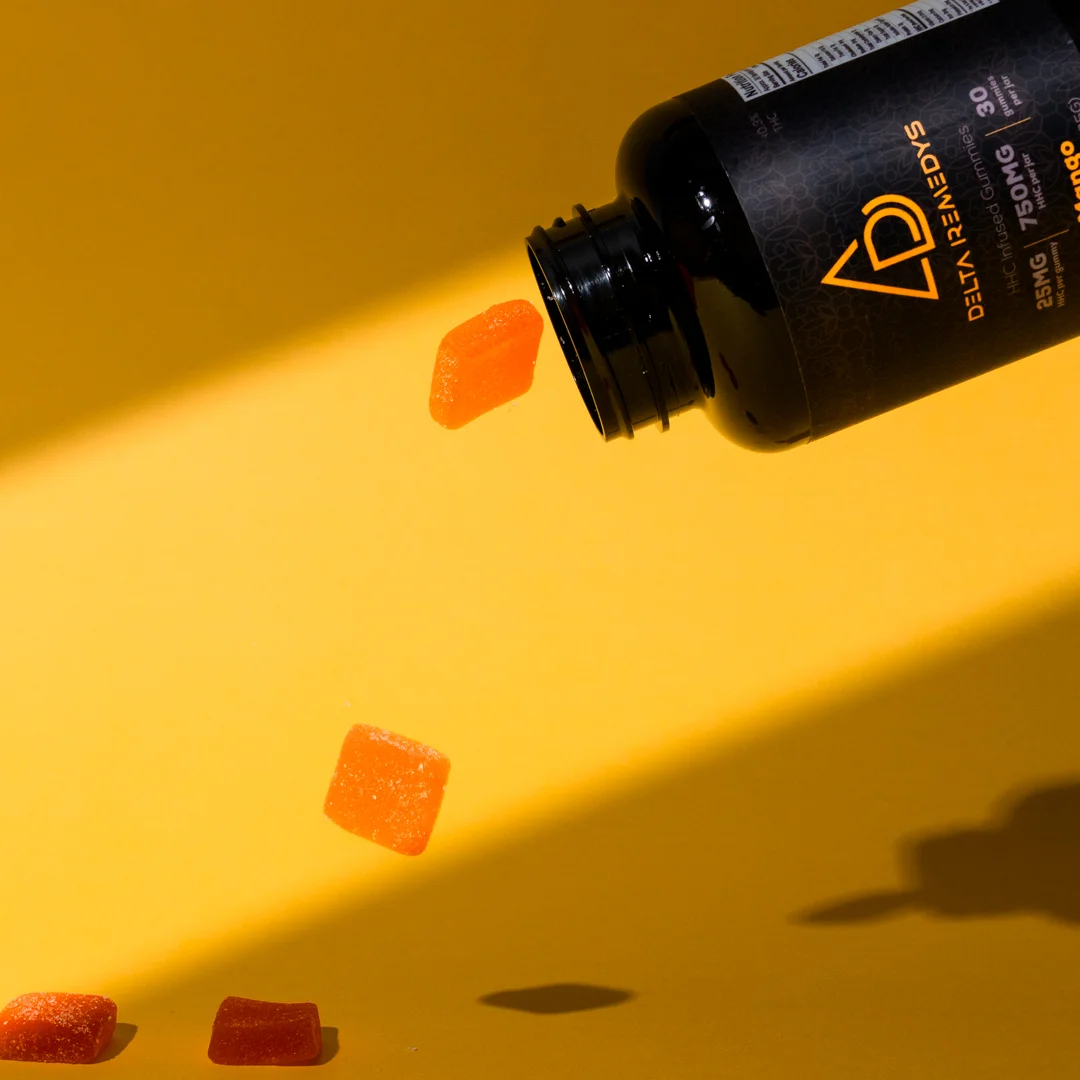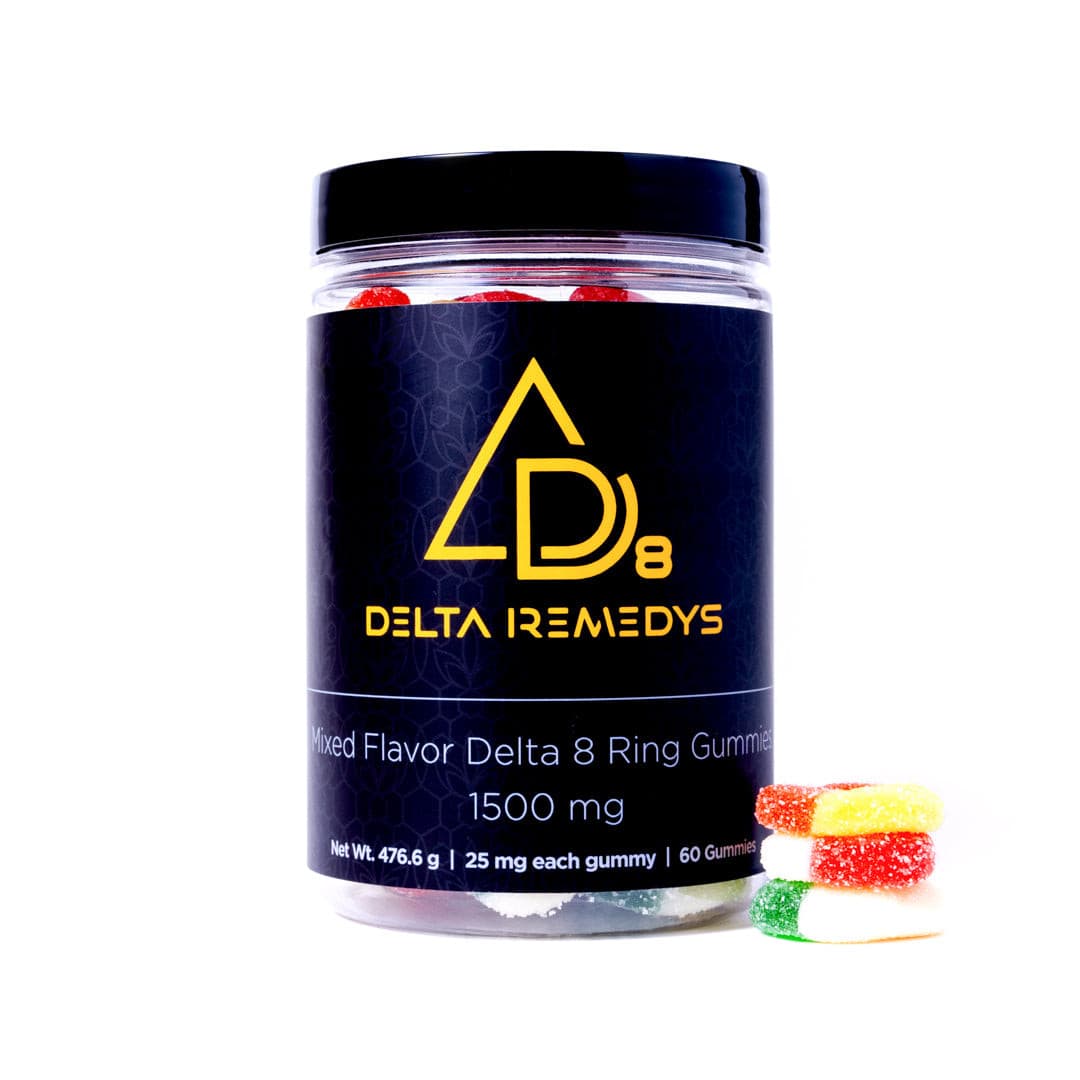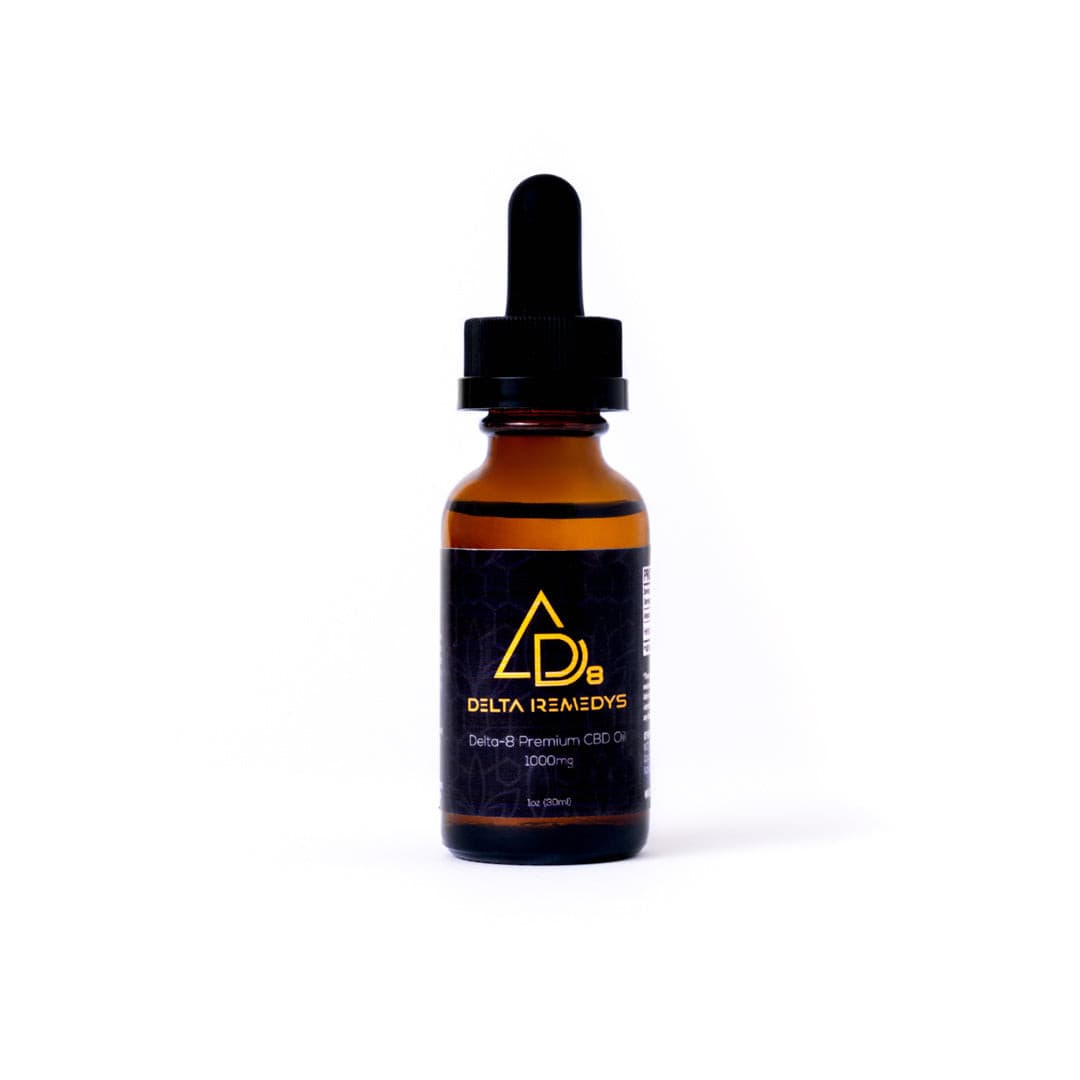You’ve just finished a long day of work. And you’re debating whether to hit the gym or relax on the couch.
Finding the motivation to stay active is a constant battle, especially given our busy lives. However, maintaining a regular fitness routine has many benefits.
This article will explore the top fitness statistics and trends shaping how people stay active today.
Let these stats motivate you to get out and make the most of your fitness journey.
Fitness participation statistics
Here are the latest insights into fitness participation global trends, popular engagement activities, and engagement statistics to help you understand how fitness is evolving worldwide.
Global fitness trends
1. More than 1 in 4 adults don’t meet the global recommended physical activity levels. (The Lancet Global Health).
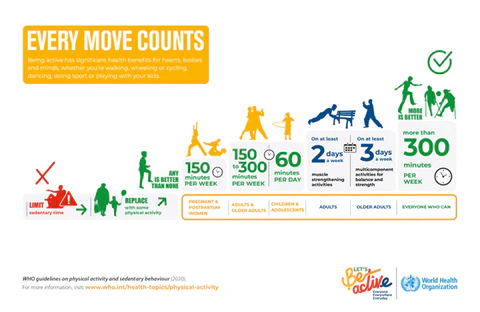
2. Over 80% of the world’s teens don’t get enough exercise. (World Health Organization)
3. In 2022, the home fitness market reached USD 12.81 billion. Grand View Research predicts it will grow at a CAGR of 5.3% from 2023 to 2030. (Grand View Research)
4. Statista projects the global health and fitness club market to grow at an annual rate of 7.67% between 2023 and 2030. (Statista Consumer Insights)
5. More than 40% of people worldwide say wellness is a top priority. (McKinsey Future of Wellness Survey)
6. Currently valued at $40.6 billion, the US health and fitness industry is starting to recover from the setbacks it suffered due to the COVID-19 pandemic. (IBISWorld Industry Reports)
Popular fitness activities
7. Strength training is the most popular workout in the U.S. for men and women (65% and 52%). The second most popular workout is running/jogging outside (41% and 24%). Then, it’s yoga (17% and 24%) and dance cardio exercises (8% and 16%). (Statista Consumer Insights)
8. About 73% of people prefer combining moderate-intensity cardio and strength training. However, these preferences differ by gender. Women favor a mix of moderate-intensity cardio and strength training more often than men (13.4% vs. 10.7%). In contrast, men prefer intense strength training more than women (17.3% vs. 0.9%). (Virginia Commonwealth University School of Medicine)
9. The top 10 most popular physical activities are:
- Walking – 79%
- Swimming – 72%
- Gardening – 72%
- DIY – 66%
- Bowling – 66%
- Pool – 63%
- Miniature golf – 63%
- Shopping – 63%
- Gymnastics – 62%
- Fishing – 60%
(YouGov)
10. The most popular sports in the world are soccer (3.5 billion), cricket (3.5 billion), hockey (2 billion), tennis (1 billion), volleyball (900 million), table tennis (850 million), basketball (800 million), baseball (500 million), rugby (475 million), and golf (450 million). (World Atlas)

11. In 2023, the most popular outdoor activities in the U.S. were hiking (20%), fishing (18.2%), running/jogging/trail running (17.9%), camping (17.7%), and bicycling (17.2%). (Statista Consumer Insights)
12. The number of people walking for fitness in the U.S. decreased for the second year in 2023. The number is currently standing at 114.04 million. The highest it’s ever been was 117.4 million in 2013. (Statista Consumer Insights)
13. In 2023, around 48 million people in the U.S. went running or jogging at least once. (Statista Consumer Insights)
14. Nearly 55 million people in the U.S. rode bikes. This was a slight increase from the 51.4 million, which was the total from the year before. (Statista Consumer Insights)
15. In 2023, the number of using weight or resistance machines annually in the U.S. reached 29.43 million. This represents a decrease of about 19% compared to 2018. (Statista Consumer Insights)
16. Over 31 million people in the U.S. went swimming at least once in 2023. Most of them (28.17 million) did so for fitness purposes. And around 3.33 million Americans swam on a team that year. (Statista Consumer Insights)
17. The number of people in the U.S. practicing yoga decreased in 2023. It went from 34 million Americans to 33.64 million. (Statista Consumer Insights)
Barriers to fitness
18. Lack of time is a primary reason people don’t exercise. (University of North Carolina)
19. Another major hurdle to working out is a lack of motivation. (American College of Sports Medicine)
20. Some people dislike working out so much that they’d rather do other things that are often undesirable. For example, according to a survey by fitness app creator Freeletics:
25% would be willing to text their ex and even cancel Netflix for a year if it meant they didn’t have to work out again.
3 in 10 would rather reconnect with their high school bully if it meant never picking up weights again.
33% would spend a long weekend with their in-laws.
34% said they’d be willing to hand wash their dishes for the rest of their lives.
21. Other barriers to exercise include boredom and doing the same routines repeatedly. (Freeletics)
Fitness engagement
22. In 2023, Americans spent an average of 30 minutes daily doing sports, exercise, and recreational activities. (Statista Consumer Insights)
23. 22.4% of men in the U.S. participated in sports, exercise, and recreational activities daily, compared to 19.9% of women. (Statista Consumer Insights)
24. Different factors influence participation in fitness activities, including socioeconomic status, age, disability, ethnicity, geography, personal interests, and societal expectations. (Statista Consumer Insights)
25. People go to the gym for different reasons:
To stay in shape (44%)
To maintain a healthy lifestyle (42%)
To build muscle (34%)
To lose weight (33%)
To have fun (31%)
To relieve stress and improve mental well-being (28%)
26. 79.2% of the U.S. population had no gym membership in 2019. (Statista Consumer Insights)
27. According to the latest data from Finder, the U.S. wasted $397 million on unused gym memberships, with 7.4% of those who actually attended only doing so once a month or less. (Finder)
28. Over 66.5 million Americans started attending a health club or studio in 2021. (Global Health & Fitness Association)
29. Nearly 50% of people with a gym membership go to the gym more than 100 times a year. (Global Health & Fitness Association)
30. The average gym member is 40 years old. However, Millennials and Gen Zers are also active in the gym. Nearly 36% of members are Millennials. (Global Health & Fitness Association)
31. 81% of gym goers believe that attending an in-person is much better for their fitness journey than training on their own. (Mindbody)
32. States with the most physically active people are Colorado, Utah, Washington, Vermont, Oregon, Hawaii, New Hampshire, California, Minnesota, Alaska, and Wisconsin. (Centers for Disease Control and Prevention)
Fitness benefits statistics
Discover how exercise enhances your well-being with key physical and mental health benefits statistics.
Physical health benefits
33. Getting 150 to 300 minutes of vigorous physical activity a week can lower the risk of adverse health outcomes by 21%-23%. (Harvard T.H. Chan School of Public Health)
34. People who engaged in two to four times above the recommended amount of moderate physical activity had a 26%-31% lower risk of dying from any cause and a 28%-38% lower risk of dying from cardiovascular disease. (Harvard T.H. Chan School of Public Health)
35. Physical activity helps strengthen bones and muscles, which is important for preventing osteoporosis and sarcopenia. (Massachusetts General Hospital and Harvard Medical School)
36. Engaging in 150 minutes of moderate-intensity exercise or 75 minutes of high-intensity exercise each week can enhance daytime concentration and reduce daytime sleepiness. (Donna & Allan Lansing School of Nursing & Health Sciences)
37. Regular physical activity can boost the immune system by reducing the risk of acute respiratory infections. (Appalachian State University)
38. Increasing physical activity can improve blood pressure and blood cholesterol. (American Heart Association)
39. Regular physical activity can reduce the risk of type 2 diabetes and metabolic syndrome. (U.S. Centers for Disease Control and Prevention)
40. Physical activity could decrease the risk of certain cancers, such as breast and colon cancer. (University of Primorsk)
41. Exercising for 30 minutes five times a week can lower your risk of stroke by 25%. (Oxford University)
42. One study found that in people who are overweight or obese, exercise training led to significant weight loss compared to the absence of training. (Centers for Disease Control and Prevention)
Mental health benefits
43. Running for 15 minutes or walking for one hour per day can reduce the risk of major depression by 26%. (Harvard Medical School)
44. Higher levels of physical activity can lower the risk of cognitive impairment and dementia. (Scientific Reports)
45. Physical activity promotes brain health and improves cognitive function. (U.S. Department of Health and Human Services)
46. Exercise can lower stress by reducing stress-related hormones, such as cortisol. (Heidelberg University)
47. Getting regular exercise can help improve mental clarity, working memory, and attention spans. (Otto von Guericke University Magdeburg)
48. Physical activity plays an important role in reducing anxiety disorder in young adults. (University of Rzeszów)
Fitness trends
Below are the top trends in fitness shaping the industry today.
Wearable technology
Wearable technology, including fitness trackers, smartphones, and heart rate monitors, continues to dominate the fitness industry.
These devices provide users with real-time data on their steps, calories burned, sleep quality, and other health metrics. Now, you can track progress and optimize their workouts.
Exercise as medicine
The concept of “exercise as medicine” promotes physical activity as a key component of health care. Medical professionals are increasingly prescribing exercise to manage and prevent chronic conditions such as:
Hypertension
Diabetes
Obesity
Exercise for mental health
At one point, losing weight and improving overall health were the main motivations for working out. Now, people recognize the positive effect regular physical activity can have on mental health.
The fitness statistics that we outlined above show that regularly working out can reduce symptoms of anxiety and depression, improve mood, and boost overall mental well-being.
Activities like running, yoga, and strength training release endorphins, which act as natural mood lifters.
Alternative Health Fitness Trends
Are you not impressed with modern-day fitness statistics? Take a look at these alternative health fitness trends, which are redefining wellness and offering new ways to enhance your fitness journey.
Holistic fitness programs
Holistic fitness programs address a combination of physical health, mental health, and emotional well-being.
These programs incorporate different types of exercises and activities, such as yoga, meditation, mindfulness, nutritional counseling, and traditional exercise routines.
Ayurvedic and Traditional Chinese Medicine (TCM) in fitness
Ayurvedic and TCM offer ancient wisdom on maintaining health and balance through diet, exercise, and natural remedies. They’re starting to appear in fitness to enhance physical performance and recovery.
While Ayurvedic principles guide people on the best types of exercise based on their body constitution, TCM offers herbal supplements and acupressure techniques to improve energy levels and promote muscle recovery.
Naturopathy in fitness
Naturopathy focuses on natural remedies and lifestyle changes to promote overall health. This involves using supplements to support physical performance and recovery. Naturopathy also encourages gentle physical activities like walking, swimming, and yoga.
CBD in pre-workout formulations
CBD is also present in some pre-workout formulas to enhance workout performance. These products provide a calming effect, reduce pre-workout jitters, and improve focus without the stimulating effects of caffeine or other common pre-workout ingredients.
CBD products for fitness recovery and performance
Cannabidiol (CBD) products are becoming increasingly popular in the fitness community. Why? They have the potential to help people improve recovery and performance.
CBD, a non-psychoactive compound derived from cannabis, possesses anti-inflammatory and pain-relieving properties. This is why many athletes are starting to use CBD oils, creams, and edibles to help reduce muscle soreness, manage pain, and improve sleep quality—all critical aspects of recovery.
In fact, choosing the right edibles can also help manage anxiety, which means you can have a better headspace in the gym, leading to better training sessions.
Using CBD Products to Reach Your Fitness Goals
Can taking a natural supplement like CBD improve fitness? Let’s see what the fitness statistics show.
Taking CBD increases oxygen consumption and pleasure ratings during endurance running. (Sports Medicine)
Due to its anti-inflammatory and antioxidant stress effects, CBD could protect against myocardial injury during intense exercise. (Yanshan University)
CBD can reduce pain caused by high physical demands. (Inflammopharmacology)
Taking CBD supplements may prevent declines in anaerobic fitness over time. This means it could help sustain short-burst, high-intensity exercise performance. (University of Northern Colorado)
Cannabis products can increase positive mood and enjoyment during exercise, which can help people feel more motivated and improve performance. (Sports Medicine)
Can Delta 10 help you lose weight? Delta 10, a cannabinoid found in cannabis, is still being studied, and its effects are not as well understood as those of more prominent cannabinoids like Delta-9 THC or CBD.
However, there are many ways to take CBD for fitness performance. These include capsules, oils, tinctures, creams, and gummies.
Delta-8 THC Ring Gummies by Delta Remedys can help you take your workouts to the next level. They can alleviate pain, reduce feelings of anxiety, and boost mental clarity for a higher-quality workout experience.
Use these fitness statistics to jumpstart your fitness journey
It’s clear that incorporating fitness into daily life has terrific benefits for everything from physical wellness to mental well-being.
Understanding and embracing the top fitness statistics and trends can help you stay motivated, reduce stress, and enhance overall health.
And remember, the journey to better health is personal. Plenty of tools and practices are available along the way, like our guide on how Delta 9 helps with weight management.
Or how Delta-8 gummies can be a wonderful addition to your standard workout routine by helping you relax and maintain mental clarity. This will keep you focused and determined to tackle every workout session.
Curious about the possibilities of Delta-8 for improving your fitness journey? Find your perfect CBD product from our wide variety of CBD products available today.

